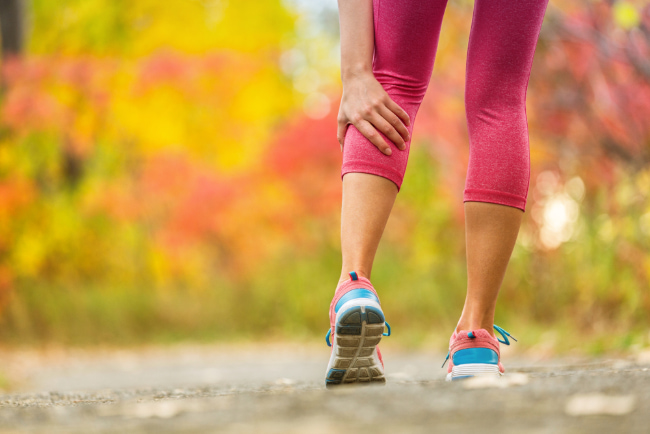It’s happened to us all at one time or another — lying in bed, your leg all of a sudden seizes up with intense pain. Or maybe you’re in the middle of a workout when you feel something spasm. Either way, you’re experiencing muscle cramping.
And while we’ve all experienced a muscle cramp or two, how much do you really know about what those cramps are and how to avoid them?
Well, we’re going to fill you in! Read on for a look at muscle cramping.
Defining muscle cramping
A muscle cramp is the sudden, involuntary contraction of a muscle or two. While these cramps are generally harmless, they can cause some major pain.
Who out there, after all, hasn’t gritted their teeth painfully through a charley horse?
Cramping can occur in any of the body’s muscles, but is most common in the thighs, feet, hands, arms and abs. If it feels like muscle cramps most often happen at night, you’re not wrong!
Particularly in the case of leg cramps, cramping often occurs while you’re lying down at night.
The causes of muscle cramping
There are a number of potential culprits behind muscle cramps. The most common is an overuse or straining of the affected muscle — such as what occurs when you’re exercising or performing repetitive motions at work.
But other causes include:
- Intense heat
- Dehydration
- Low electrolyte levels (which is often associated with dehydration)
- Lack of blood flow to muscles
- Pregnancy
- Some medications
- Compressed nerves
While researchers aren’t quite sure why muscle cramping, like charley horses, often occurs at night, it’s thought that blood flow changes from lying down may be to blame.
How to treat muscle cramping
In most cases, cramps will disappear as quickly as they appeared. But in some cases, muscle cramping may stick around for a bit, causing discomfort and interrupting normal activities.
You can help alleviate the cramp and speed its disappearance by performing stretching exercises, soaking in a bath with Epsom salt, massaging the affected muscle or icing the muscle. A good rule of thumb is to apply heat (or take a bath) when the muscle is tight and apply ice when the muscle is sore.
While most muscle cramping isn’t serious, there are some cases when you should seek medical attention. Talk with your doctor if you experience recurrent or severe cramps; experience cramping along with swelling, redness or muscle weakness; or experience cramps that don’t disappear following self-care techniques.
Preventing muscle cramping
The good news is that you can actually prevent cramps in most instances. Take steps to keep cramping at bay by regularly stretching — including before exercise and before bed — and drinking plenty of fluids, particularly when it’s hot or you’re exercising.
If you’re exercising intensely, you’ll also want to stretch after your workout and you may benefit from drinking an electrolyte-replenishing beverage during or after your workout. That’s especially true if you sweat a lot.
It’s also a good idea to include plenty of foods in your diet that contain vitamins, magnesium and calcium.
Experiencing frequent, unexplained muscle cramping? Talk with your doctor. Need a doctor? Find one here.







